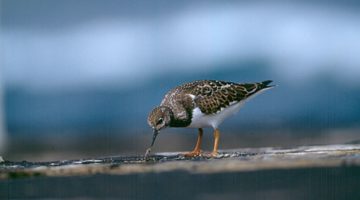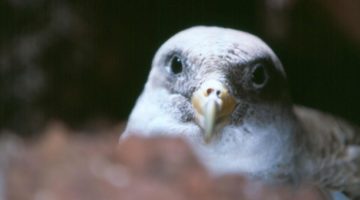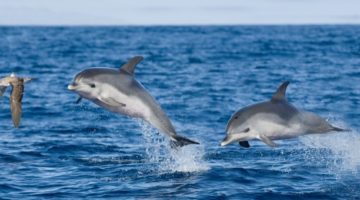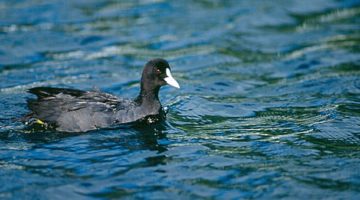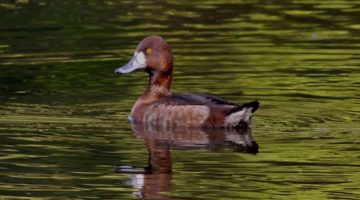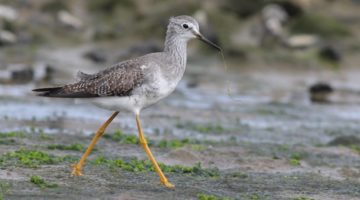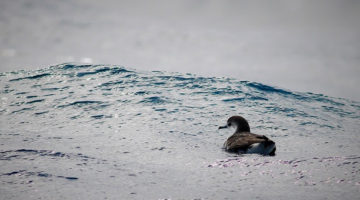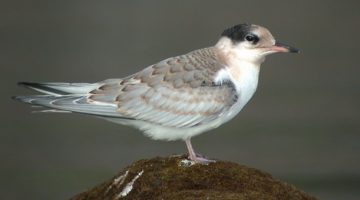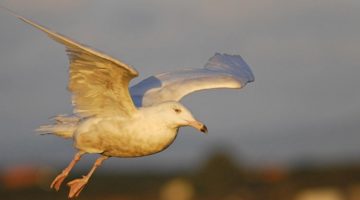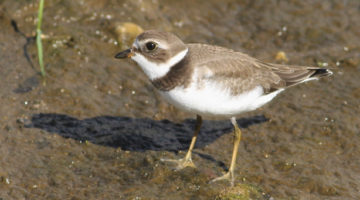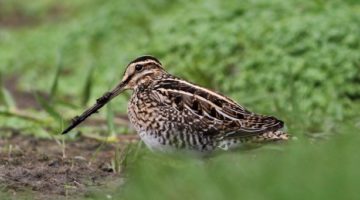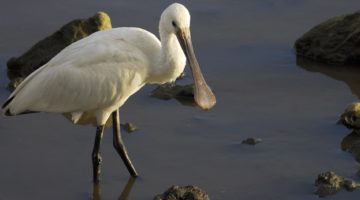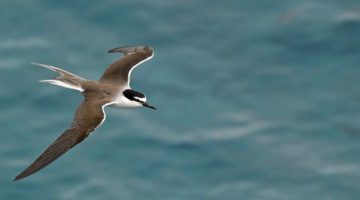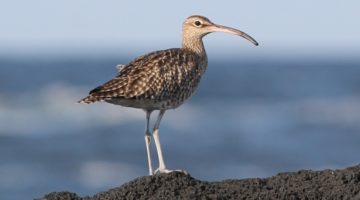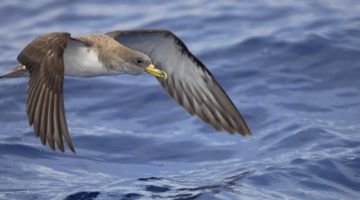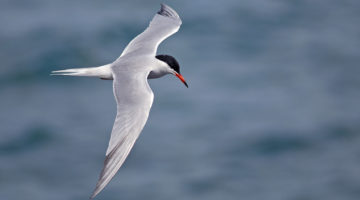Birds, whales, dolphins…
Mirateca Art is organizing the first Art and Birdwatching festival in the Azores. This festival will take place in Lajes do Pico between the 6th and 12th of November 2017. As expected, Espaço Talassa has joined the organization to take part in this event.
Birdwatching in the Azores is taking its first steps. For instance, in S. Miguel Island with the Azores bullfinch (Pyrrhula murina), in Graciosa Island with the Monteiro’s storm petrel (Oceanodroma monteiroi), and in Corvo Island for all the “Twitchers”.
Pico Island also presents a great potential, especially with the tidal pools and coastal vegetation in front of the seawall at Lajes do Pico. This area is noted for waterfowl and shorebirds, as well as herons, and it is the top bird watching location of the island… and the best thing is that you can watch them from your hotel room window!
November can be a good month for birdwatching in the Azores, both inland and out-at-sea. In this season, it is hard to tell what you can see as anything can come up in this time of the year but Spotted Sandpiper (Actitis macularia), Semipalmated Sandpiper (Calidris pusilla), Semipalmated Plover (Charadrius semipalmatus), Lesser Yellowlegs (Tringa flavipes), Greenshank (Tringa nebularia) have been seen almost every Autumn.
Some realistic examples: Great american Egret (Ardea alba), Great Blue Heron (Ardea herodias), Spoonbills (Platalea sp.), Greater Yellowlegs (Tringa melanoleuca), Western Sandpiper (Calidris mauri), Buff-brested Sandpiper (Tryngites subruficollis) or even Belted Kingfishern (Megaceryle alcyon) and Yellow crowned nightheron (Nyctanassa violacea) are also possible.
Up on the moutains we have good change for Yellowlegs (Tringa sp.) and Snipes (Gallinago sp.). Not only the Common Snipe (Gallinago gallinago) but also the much wanted Wilson Snipe (Gallinago delicata). Ducks like Eurasian (Anas penelope) and American Wigeon (Anas americana), Common (Anas crecca) and Green-winged Teals (Anas carolinensis). Pintails (Anas acuta) and Northern Shovlers (Anas clypeata) as well as diving ducks like Tufted Duck (Aythya fuligula), Ring-necked Duck (Aythya collaris), Lesser (Aythya affinis) and Greather Scaups (Aythya marila).
Do not forget the resident endemic subspecies. Special atention to the Central and Western group Goldcrest (Regulus regulus),or one of 3 Subspecies in Pico case the Regulus inermus.
In addition, we will also focus on the island’s wonderful biodiversity, for instance, the only species of mammal endemic in the archipelago, the Azores noctule (Nyctalus azoreum).
It is unlikely to visit Pico without feeling fascinated by whale and dolphin’s watching, as well as by other sea life such as sea turtles and sharks… In November it is still possible to observe the following species: short-beaked common dolphins (Delphinus delphis), Atlantic spotted dolphins (Stenella frontalis), bottlenose dolphins (Tursiops truncatus), Risso’s dolphins (Grampus griseus) as well as the symbolic sperm whales (Physeter macrocephalus),… amongst others.
The trips at sea will alternate with surveys of the three main locations for birdwatching in the island: the tidal pools and coastal vegetation of Lajes do Pico, the plateau’s freshwater lagoons and “Ponta da Ilha”.
At the end of the day, there will be presentations (Power point) and discussions on different themes, such as:
- Birds of the Azores (Gerbrand Michielsen);
- Pico Island: a tiny piece of history, geography, settlement,…, an original habitat (Sónia Manso);
- Azores and North Atlantic Cetaceans (Susana Simião).
Throughout the week, we will also partake in the regional campaign “SOS Cagarro” (which ends on November 15th). To get involved, we collect Cory’s shearwaters which are lost or disoriented with nocturnal lights, and release them close to shore, the following morning.
Furthermore:
Mirateca Art will organize, in Lajes, several painting’s and photography’s exhibitions, and movie’s sessions (in close quarters to the hotel).
Espaço Talassa will take part in educational activities with local children from the primary school of Lajes. The idea is to make them aware of the importance and value of this location as a unique habitat in the Azores. This awareness will not be limited to children.
- Transfer from and to Pico’s airport or Madalena’s maritime terminal and Lajes do Pico.
- Reception and welcome briefing.
- Five nights in 2** hotel on half-board basis.
- Portuguese, English, French and Flemish speaking committees.
- Three matinees to survey the “Maré” area (tidal pools and coastal vegetation of Lajes do Pico).
- Trip at sea with the purpose to survey different marine species (approximately 3h).
- Uncovering Pico Island and top birdwatching locations (approximately 8h).
- Trip at sea with the purpose to survey different marine species and stop in S. Jorge Island (approximately 8h).
- Birdwatching at dawn from Vigia da Queimada.
- Night session participation in the “SOS Cagarro” campaign to help the Cory’s shearwaters (Calonectris borealis).
- Entrance to the “Museu dos Baleeiros” (Whaler’s Museum)
- Taxes and licence for cetacean’s watching.
- Insurance.
All the activities are dependent on the appropriate weather conditions.
- 25€ supplement per person to organise the transfer from and to Faial’s airport.
- 48€ supplement for an individual room.
- 55€ reduction on the third participant housed in triple room.
- 15€ supplement for a sea-view bedroom.
Group limited to 16 people.
This price has a baseline of a double room occupancy in “Whale’come ao Pico” hotel.
For the bold who wish to adventure climbing Pico Mountain, you can find more information at:
- D1, Monday, November 6th: Reception at Pico’s airport or Madalena’s maritime terminal and transfer to Lajes. Welcome reception and information about the programme with Sónia Manso. Late afternoon birdwatching in the tidal pools and coastal vegetation of Lajes with Gerbrand Michielsen.
- D2, Tuesday, November 7th: Morning trip at sea with Susana Simião (approximately 3h). In the afternoon, visit to the Whaler’s Museum with Sónia Manso. Night activity with Gerbrand Michielsen, joining the “SOS Cagarro” campaign.
- D3, Wednesday, November 8th: Tour around Pico Island, uncovering its biodiversity and main birdwatching locations with Gerbrand Michielsen (approximately 8h). Late afternoon presentation about Pico, its original habitat, flora, fauna,… with Sónia Manso.
- D4, Thursday, November 9th: At dawn, sea bird watching from Vigia da Queimada. In the afternoon, birdwatching in the tidal pools and coastal vegetation of Lajes. Late afternoon presentation about “Birds of the Azores” with Gerbrand Michielsen.
- D5, Friday, November 10th: “Around the biodiversity” tour at sea, with a stop in S. Jorge Island with Gerbrand Michielsen and Susana Simião (approximately 8h). Late afternoon presentation about “Cetaceans of the Azores and North Atlantic” with Susana Simião.
- D6, Saturday, November 11th: Transfer back to Pico’s airport or Madalena’s maritime terminal.
The trips description is merely descriptive. Organization can be altered depending on weather conditions, safety, and the participant’s capabilities.
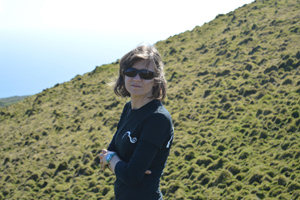
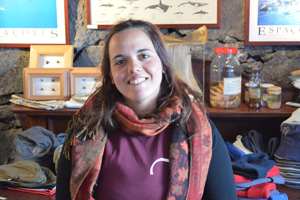
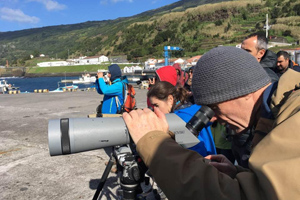
- Sónia Manso: Sónia visited the Azores for the first time in 2007 and fell in love with Pico. In 2012, she became a Pico resident. She studied marine biology at the University of the Algarve, and has always worked in environmental tourism and education. It was in Ria Formosa, Algarve, that she had her first experience with birdwatching, as part of the Ecology classes’ outdoor activities. Her curiosity for ornithology took her to pursue several birdwatching courses and to assist in the organization and participation of related events. Later, associated with nature tourism companies, she led activities of initiation to birdwatching for children and general audiences. In the Azores, she continued to do birdwatching, either as a fisheries observer, or on a personal level. At Espaço Talassa, she is responsible for the Outdoor Activities, where she organises nature hiking trails and introduces Pico to the visitors. She always has stories to tell about the volcanos, Pico’s traditions and she knows where to find the best “Verdelho” of the island.
To contact Sónia: outdoor@espacotalassa.com
- Susana Simião: Susana was born far from the sea, but always felt fascinated about marine life. She decided to come to the Azores in 2003, to get a BSc in Marine Biology. She has many topics of interest, including the behaviour, social structure and vocalizations of cetaceans, which made her continue her studies and obtain a MRes in Mammal Science at the University of St. Andrews, Scotland. She has also worked on international projects relating sea turtles in Uruguay. She joined the Espaço Talassa team in 2014, where she is responsible for the sea turtle tagging project in which the company collaborates with the University of Florida, USA; as well has for the MARCET project, whose goal is to create a network, through the observation and monitoring of cetaceans and their ecosystem, with the purpose to share knowledge in the Macaronesia region, to promote growth and sustainable development of the cetacean watching activity. She is very enthusiastic and will be happy to share her knowledge about marine life with you.
To contact Susana: susanasimiao@espacotalassa.com
- Gerbrand Michielsen: Born in Holland, Gerby left his country in 1991 for the Azores. In the year 2000 he was invited by the Azorean government to set up a walking trail network on the nine Azorean islands. It was during these years that he had the privilege to meet Staffan Rodebrand, an experienced Swedish birdwatcher who helped him in the path of Birdwatching.Soon he became an affectionate birdwatcher searching for rarities every time he could, participating actively on international forums, and publishing pictures in different international magazines such as Birding World and Dutch Birding, as well as partaking in the Birding Azores’s team. Together with a friend, he built the first bird hide of the Azores, located close to Lagoa Branca, in Flores Island.In 2011 he decided to dedicate himself professionally to birdwatching and funded his own birdwatching company “Gerby birding”. He is also co-author of the first Azorean Birdwatching guide, together with the Azorean ornithologist Pedro Rodrigues.
To contact Gerby info@gerbybirding.com
